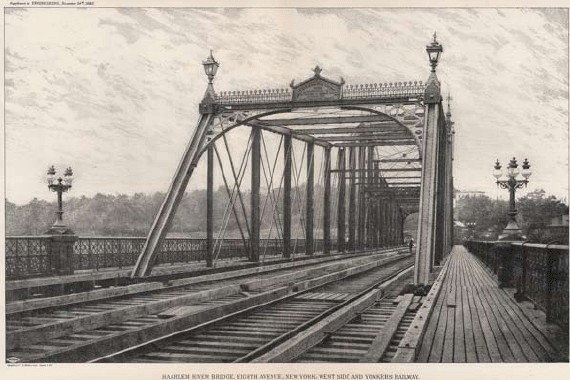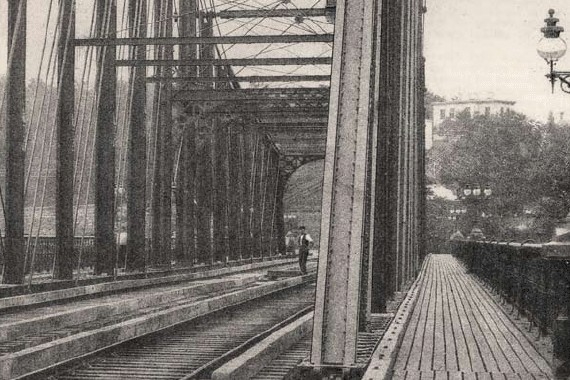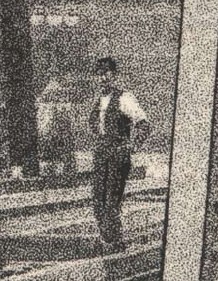- Relief printing
- Intaglio and planographic printing
- Color printing
- Bits and pieces
- Early photography in silver
- Non-silver processes
- Modern photography
- Color notes
- Color photography
- Photography in ink: relief and intaglio printing
- Photography in ink: planographic printing
- Digital processes
- Where do we go from here?
Random screen halftones

Random screen halftone. Sprague & Co. Haarlem River Bridge, Eighth Avenue, New York; West Side and Yonkers Railway. 1882. 11 1/4 x 17" (28.6 x 43.2 cm). The Museum of Modern Art, New York. Gift of Richard Benson.
The hand-cutting of photographs could only go on for so long before some mechanical method was developed. I need to emphasize here that we are examining relief printing, which in the nineteenth century usually meant letterpress—the metal type used in letterpress printing was creating more pages than all other processes combined. Yet it lagged behind in the mechanical translation of photography into ink. Gravure and collotype (the former an intaglio and the latter a planographic process) offer translation methods far earlier than did relief printing. This plate comes from an engineering manual made in the early 1880s.

Detail of Random screen halftone. Sprague & Co. Haarlem River Bridge, Eighth Avenue, New York; West Side and Yonkers Railway. 1882. 11 1/4 x 17" (28.6 x 43.2 cm). The Museum of Modern Art, New York. Gift of Richard Benson.
The picture was obviously derived from a photograph—it has the rigid perspective that could only have been drawn by a wide-angle lens. It also has an odd background of trees and sky that would never have been described this way by an artist making an original work; the trees running along the midline of the picture are a nearly amorphous blob of middle tones—not the sort of thing one would have created intentionally. To top it all off we have a tiny man standing on the bridge, just to the left of the girders on the right side of the superstructure. From photography’s earliest days figures were placed in pictures to demonstrate the scale of the thing being photographed.

Detail of Random screen halftone. Sprague & Co. Haarlem River Bridge, Eighth Avenue, New York; West Side and Yonkers Railway. 1882. 11 1/4 x 17" (28.6 x 43.2 cm). The Museum of Modern Art, New York. Gift of Richard Benson. A detail enlarged four times from the original to show the random grain, which translated the photograph’s tones into binary marks that could be printed.
The print is a true oddity—a reproduction made photomechanically by rephotographing the original photograph through a screen of prepared glass that broke up its tones into a random grain. The principle would be systematized in the letterpress halftone, but there the grain would be regular. It is impossible to know just how the screen was made, but it looks as though it was produced from a collotype. The exciting step we see here is that the screen has done the job of translating tone into a pattern of discrete black and white marks. This was first attempted (as far as we know) by Talbot, the inventor of paper-based photography. It took forty years, from his early trials in the 1840s until the mid- 1880s, before this revolutionary idea could be made to work with any dependability.

